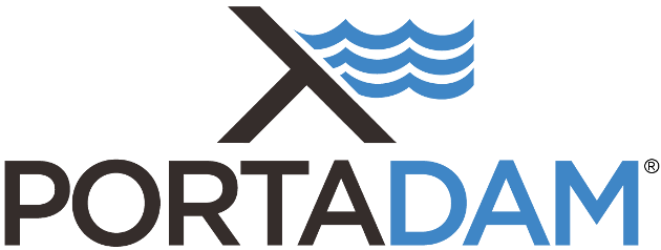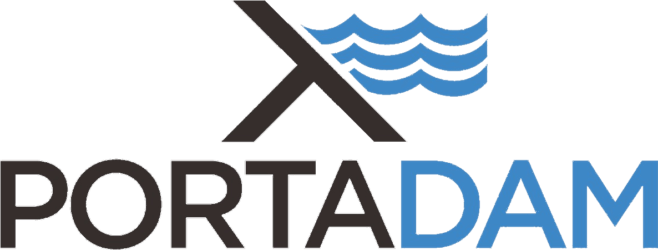
Every building project needs to consider the risk of flooding, but countless variables add to the challenge of selecting the right flood mitigation solution. These systems can reduce flood damage through different mechanisms, such as blocking out water with a floodwall or erecting a temporary cofferdam.
The pros and cons vary widely, so building owners must consider factors like cost, flexibility, structural integrity and the equipment and safety impacts that would occur should a solution fail.
What Is Flood Risk Mitigation?
Flood risk mitigation refers to a wide range of strategies used to reduce the consequences of floods by implementing measures in vulnerable areas. These measures might include structural or nonstructural changes:
- Structural: A structural measure aims to change the characteristics of the flood and minimize the probability of flooding. Some structural methods include levees, floodwalls and dams, which divert water away from people and communities. Structural measures could divert water toward wetlands or reservoirs, but they could also block water from entering a site via large barriers that surround it.
- Nonstructural: Nonstructural measures affect a flood's impact or consequences but do little to change the characteristics of the flood. These techniques include elevation, floodproofing, relocation, building codes and zoning laws. They can help minimize damage by protecting items and people, but not moving or otherwise adjusting the path of the water.
Both types of flood mitigation strategies can help reduce risk, depending on the situation, but different groups are responsible for accomplishing them — business owners can take additional structural measures and the government can implement building requirements. Either way, flood risk mitigation is vital because it can save you from the monetary damages and safety risks associated with floods.
It's also necessary for avoiding interruptions to business processes, especially mission-critical ones. It could even reduce your insurance rates. Still, some solutions can be costly or negatively impact the property, so you need to weigh the need for protection with other factors, like how easy your solution is to implement in sudden periods of flood risk.

Types of Flood Risk Mitigation Solutions
As you choose a flood mitigation solution, consider the following options:
- Wet or dry floodproofing: Wet floodproofing allows water to enter the building, which is designed to minimize damage. This approach calls for careful planning, and you'll need to consider how the flood will affect structural integrity, the need for moving equipment and access to power. Dry floodproofing keeps water out of the building above and below the grade level. It may involve sealing openings and adding structural reinforcements to the building.
- Levees and embankments: Levees and embankments typically use soil to keep floodwater away from an area. They can block off valuable real estate, though they're often costly to implement. Sometimes, they may not be possible due to existing infrastructure or development. They may also experience stress and erosion due to the force of the water's movement.
- Floodwalls: Floodwalls function similarly to levees, but they usually use human-made materials and can be used in temporary applications. You can install them when flooding threats occur or for shorter projects, like construction.
- Dams and cofferdams: Dams create barriers across a body of water to adjust its levels and hold water in a reservoir when needed. Cofferdams are temporary dams that can be dry on one side so that workers can create a dry space for in-water work. They're flexible and affordable options.
Depending on your application, certain solutions offer more advantages than others. Here are some of the flood mitigation concerns that affect different industries:
- Industrial sites: Industrial operations can face significant downtime and financial losses during flooding. A solution that keeps operations moving offers a clear advantage, and exterior resources, such as generators or worksites, may need protection, too.
- Commercial properties: Flood mitigation for commercial properties can be challenging with limited options. For example, a dense, urban area may not have the landscape to install a levee. Like industrial sites, commercial properties need to protect their assets, including equipment and building value. In addition to physical measures, businesses can limit flooding effects with contingency plans, such as relocating vital operations to other offices or sending sensitive goods to secure locations.
- Critical infrastructure: Critical infrastructures, such as hospitals and power generation facilities, need to remain operational at all costs. As a result, flood mitigation solutions must be reliable and quickly implemented. They must also support continued access to power.
Flood Risk Mitigation During Construction Projects
Construction projects have a unique need for flexible flood risk mitigation. If construction occurs on a floodplain or other vulnerable area, a flood can quickly undo weeks or months of work. The negative effects of flooding on a construction site may include:
- Damage to materials, equipment and the job site
- Delayed timelines
- Contamination
- Reduced structural integrity of the building
- Challenging and potentially hazardous working conditions
Contractors must consider flood risk mitigation for construction projects before any work begins. Conduct risk analysis regarding factors including what type of flooding may occur, predicted water levels and the likelihood of an event. Consider what high-value assets, such as heavy equipment, would be damaged and how your project might affect or be affected by nearby infrastructure.
Many contractors overlook flood risks due to the short timeframe of their projects and fail to consider the long-term implications, such as damage to the final structure or significant delays. Affordable yet flexible solutions for flood risk mitigation during construction can simplify job site protection in a wide range of situations. Since construction projects are temporary, cofferdams are ideal because contractors can rent them.
Browse Flood Protection Solutions From Portadam
Portadam offers several flood protection solutions, all engineered for dependability and cost-effectiveness.
Our modular, engineered systems are ideal for temporary flood barriers. With customizable configurations and compact storage options, they're easy to set up and remove — saving precious time and labor — and can be reused for years. They've also been tested and verified by the U.S. Army Corps of Engineers and are backed by years of successful use.
Along with the Portadam flood protection products, we can help from the very beginning with expert flood risk analysis services. Reach out to a representative today to learn more about Portadam and how we can help you limit flood risk.


